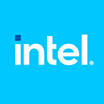
Generative AI Webinar Series
Unleashing GenAI: Innovations and Insights for AI Developers
On Demand Webinars
Optimizing Generative AI with Vector Databases: What, Why, and How
Vector databases have emerged as the preferred option for customizing generative AI and making it more trustworthy. Both dedicated vector DBs and vector-enabled DB suites deliver companies’ domain-specific data–most often text or imagery–to large language models. They help fine-tune models and enrich user prompts via retrieval-augmented generation (RAG). These use cases enable companies to customize their language models and better govern their inputs, reducing risks such as hallucinations, privacy breaches, and compliance issues.
Speakers
Vice President of Research at BARC
Senior AI Developer Community Lead, Intel Sales and Marketing Group
Emerging frontiers in GenAl: Agentic Al workflows and Multimodal LLMs
An emerging paradigm in Generative AI is the rise of Agentic AI workflows: where different AI models act as agents to cooperate, plan, and execute to solve complex tasks. These agents can make use of foundation AI models - like large language models (LLMs) and multimodal LLMs - to perform project planning for tool usage and self reflection. Multimodal LLMs are particularly useful when an enterprise has data in modalities other than text, such as videos, images, audio recordings, slides, diagrams, tables, and charts.
Speakers
Principal AI Research Science Manager
Intel Labs
Founding Machine Learning Engineer
Landing AI
AI Sales Enabling, Intel Sales and Marketing Group
The Beauty of GenAI for Retail
How can a retail business adopt generative AI and accelerate its growth? Join e.l.f. Beauty and Iterate.ai to learn how a low-code AI platform can quickly deploy large language models to improve operational efficiency and customer engagement. Not a data scientist? Learn how a low-code platform can augment your AI skills for faster innovation.
Speakers
Chief Digital Officer
e.l.f. Beauty
Co-founder and CTO
Iterate.ai
Generative AI Marketing Lead
Intel's Data Center and AI Business Unit
Building GenAI Platforms from Scratch
Large Language Models (LLMs) and, more broadly, Generative AI (GenAI), have showcased remarkable versatility across a diverse array of industries and applications. Accenture will share its best practices, considerations, and architectures for constructing a self-managed GenAI platform capable of hosting a myriad of applications.
Speakers
Data Scientist
Accenture Applied Intelligence Division
Generative AI Marketing Lead
Intel's Data Center and AI Business Unit
Prompt-Driven Efficiencies in LLMs
It’s no secret that Large Language Models (LLMs) come with many challenges. Through prompt economization and in-context learning, we can address two significant challenges: model hallucinations and high compute costs.
We will explore creative strategies for optimizing the quality and compute efficiency of LLM applications. These strategies not only make LLM applications more cost-effective, but they also lead to improved accuracy and user experiences.
Speakers
Senior AI Solutions Engineer
Intel
Generative AI Marketing Lead
Intel's Data Center and AI Business Unit
Small and Nimble – the Fast Path to Enterprise GenAI
The fast path to integrate the power of generative AI for your business is not necessarily general purpose, third-party giant models! Smaller LLM models, like those less than 20B parameters, can be a good or better match for your needs. Recent commercially available compact models, such as Llama 2, can address the key attributes that you need– performance, domain adaptation, private data integration, verifiability of results, security, flexibility, accuracy, and cost effectiveness. Join us as we evaluate the effectiveness of open source LLM models, discuss pros and cons, and share methods to build nimble models.
Speakers
Vice President and Director of Emergent AI Research
Intel Labs
NLP Deep Learning Researcher
EAI Intel Labs
Generative AI Marketing Lead
Intel's Data Center and AI Business Unit
The Next Wave of GenAI: Domain-Specific LLMs
To gain competitive advantage, innovative companies are starting to embed large language models into proprietary workflows that support domain-specific use cases. Many of them choose open-source LLMs to reduce data and compute requirements as well as privacy risks. The results have the potential to accelerate and enrich all sorts of business functions, from customer service to document processing and more. Join the discussion with AI leaders to understand how careful design, implementation, and governance will help you achieve success with generative AI.
Speakers
VP of Research
Eckerson Group
AI Product Director
Intel's Data Center and AI Group
Generative AI Marketing Lead
Intel's Data Center and AI Business Unit

